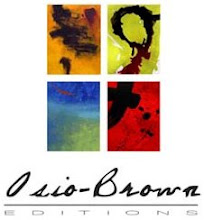One important element to consider is what type of art the printmaker is capable of reproducing. It is clear that oil paintings can be more difficult to replicate accurately than a watercolor. If a shop is not reproducing oil paintings on canvas with a liquid laminate surface protection, you have an additional red flag.
Other insightful details to discover include the printmaker’s policies for certifying a print as a limited edition with respect to a Certificate of Authenticity. This certificate is your assurance that the printmaker will support your efforts to make a limited edition print and your guarantee that the edition is not compromised.
Another important subject to broach is who owns the rights to the master digital file. If a photographer points their camera at your art to digitize it, it is only legal to do so with your express permission as the owner of that copyrighted image. This is a widely misunderstood area of copyright law, so make certain your fee for the capture includes your right to possession of that file after the project is complete. Accept nothing less. When we capture original art in our studio, our clients receive the actual production file on a CD or DVD. It is your copyrighted material, and the printmaker has no right to hold you hostage by not offering you a copy of the production file.
Finding a good digital fine art printmaker is similar to buying real estate, minimize the number of negatives. Make sure they don’t raise any of the following red flags:
· Outsourcing the digitizing of the art to a third party.
· Telling you that you can get your art scanned anywhere and they will print it.
· Immediately accepting your digital file without a cautionary note or file review.
· Talking about brands of printers while downplaying the importance of the capture quality.
· Employing a 35 mm camera or consumer scanner for capture (39 megapixel digital cameras are sufficient for smaller works).
· Being unwilling or unable to allow you to view and approve a proof in the presence of your original art.
· Utilizing dye-based inks for printing instead of pigment inks.
· Telling you that laminating canvas isn’t necessary.
· Not offering you a master copy of the production digital file.
· Boasting a low cost per square inch to get your business.
· Being unwilling to send a sample of their work.
As you can see, there are a prodigious number of issues to resolve before entrusting your art to a printmaking studio. Even if you feel you have found a quality shop, my suggestion is to give them one painting and go through the entire process from start to finish to see how they handle your project. If you trust them with one painting instead of taking a chance with 10, you reduce your risks and can make a sound judgment from your own experience with that particular printmaker.
Be certain you get your questions answered upfront and take the time to assess the skills, history, policies, and reputation of the printmaker prior to sending your artwork. In the end, choosing the right printmaker can make or break the market acceptance and quality of your prints.
Reposted By:
Adam Brown
